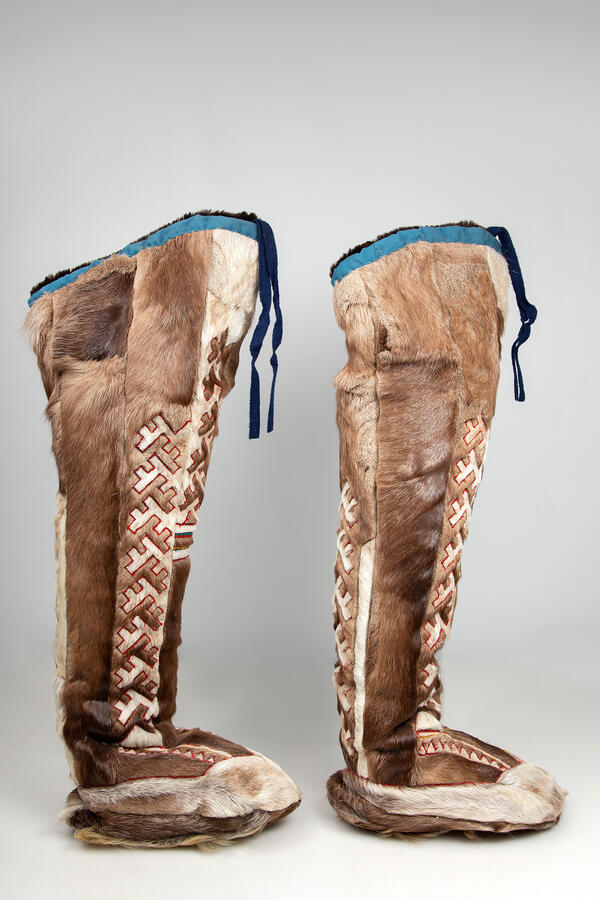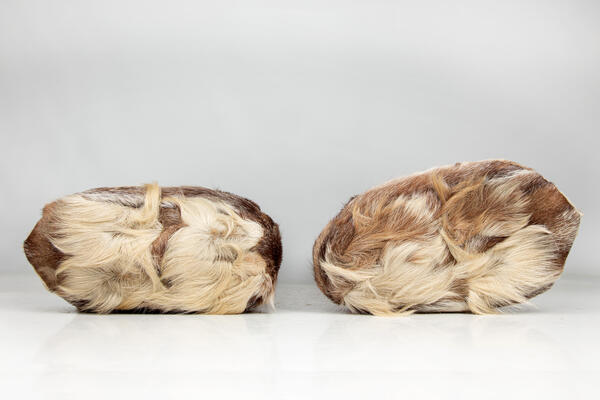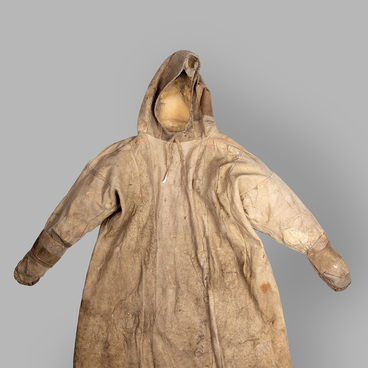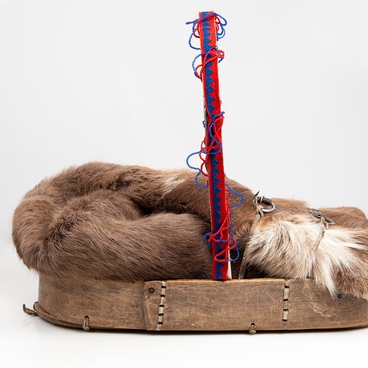In winter, the air temperature in Western Siberia drops to –50 degrees Celsius, so warm clothes and shoes are mandatory for survival. The Forest Nenets women have long been engaged in the manufacture of clothing and learned sewing skills from their elders in the family since early childhood. The main material of Nenets clothing is deer skins. In winter, the Nenets wear double-sided fur shoes, which are called “kisy” or “pema”.
The Ayvasedo family know an old riddle regarding the layering of traditional Nenets shoes: “When going out one dives into a friend.” The fact is that fur stockings (chizhy) are inserted into the kisy. The stockings are sewn from winter calf skins with fur inside. Kisy are worn over stockings and tied under the knee with a leather strap or a colored ribbon woven from woolen threads. Insoles for boots are made of dry grass.
The top of the Nenets boots is high, up to the thigh, with an obliquely cut edge. It is sewn from strips of fur from the lower leg of a deer. It is secured to the sole with the help of two rows of straps: the lower one, which wraps around the entire foot from the heel to the nose, and the upper one in the form of wedges of different lengths. Kisy are sewn the same for both feet, and the shape of the right and left boots is formed during the process of wearing them.
Nenets shoes not only keep one’s feet warm and are resistant to northern winds, but also remain waterproof because artisans have treated the material with smoke. The sole of men’s shoes is sewn from the skin removed from the joints of the legs or the forehead of a deer. The pile on the sole is positioned in the opposite direction so that the shoes are less slippery and it is easier to walk on snow. The Nenets sew parts of boots with tendon threads.
It is possible to distinguish Nenets women’s shoes from men’s shoes by the pattern that goes down from top to bottom. The shoes are decorated with stripes — these are symbols of prohibitions: it is forbidden to steal, kill, swear, and offend the weak. For a long time, the ornament replaced writing, accompanying a person from birth to death. The image on clothes and objects was designed to mark a person’s place in society, protect people from adversity, and bring good luck. The ancient traditions of the ornament of women’s and men’s winter shoes still exist among the Nenets.
The Ayvasedo family know an old riddle regarding the layering of traditional Nenets shoes: “When going out one dives into a friend.” The fact is that fur stockings (chizhy) are inserted into the kisy. The stockings are sewn from winter calf skins with fur inside. Kisy are worn over stockings and tied under the knee with a leather strap or a colored ribbon woven from woolen threads. Insoles for boots are made of dry grass.
The top of the Nenets boots is high, up to the thigh, with an obliquely cut edge. It is sewn from strips of fur from the lower leg of a deer. It is secured to the sole with the help of two rows of straps: the lower one, which wraps around the entire foot from the heel to the nose, and the upper one in the form of wedges of different lengths. Kisy are sewn the same for both feet, and the shape of the right and left boots is formed during the process of wearing them.
Nenets shoes not only keep one’s feet warm and are resistant to northern winds, but also remain waterproof because artisans have treated the material with smoke. The sole of men’s shoes is sewn from the skin removed from the joints of the legs or the forehead of a deer. The pile on the sole is positioned in the opposite direction so that the shoes are less slippery and it is easier to walk on snow. The Nenets sew parts of boots with tendon threads.
It is possible to distinguish Nenets women’s shoes from men’s shoes by the pattern that goes down from top to bottom. The shoes are decorated with stripes — these are symbols of prohibitions: it is forbidden to steal, kill, swear, and offend the weak. For a long time, the ornament replaced writing, accompanying a person from birth to death. The image on clothes and objects was designed to mark a person’s place in society, protect people from adversity, and bring good luck. The ancient traditions of the ornament of women’s and men’s winter shoes still exist among the Nenets.





